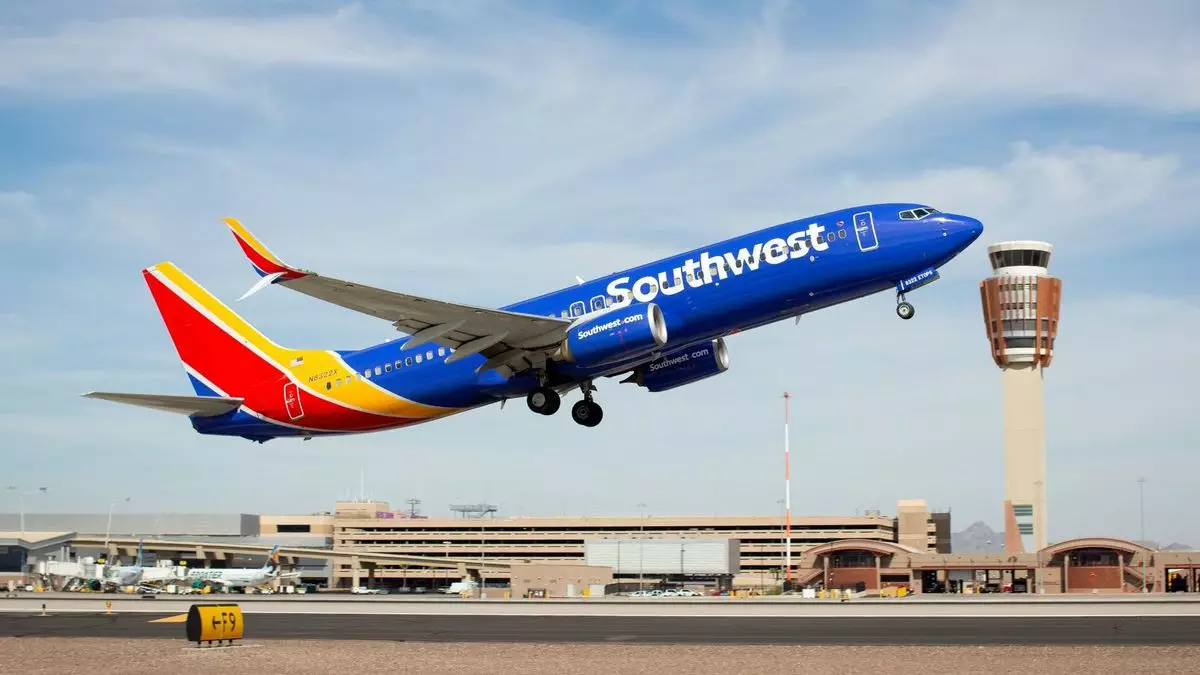After years of speculation and anticipation, Southwest Airlines has made a groundbreaking move by launching its inaugural overnight flights, also known as red-eye flights. This significant development took place on a Thursday evening when five overnight routes were activated from Las Vegas, Los Angeles, and Phoenix, extending to various destinations east of the Mississippi River. As passengers boarded these flights, they were welcomed with gift bags and commemorative cards, marking the occasion as not just another flight but a momentous event for the airline.
Initially, Southwest’s red-eye service consists of five daily flights that connect Las Vegas with Baltimore and Orlando, alongside routes from Los Angeles to both Baltimore and Nashville, and from Phoenix to Baltimore. By the time summer arrives in June, the airline has ambitious plans to expand its network to 33 overnight flights on a daily basis. This swift expansion reflects Southwest’s commitment to not only enhancing its route offerings but also reestablishing its competitive edge, which has been challenged since the COVID-19 pandemic.
The introduction of red-eye flights is part of a broader strategy aimed at reviving the airline’s financial status, which has suffered in comparison to competitors like Delta, United, and Alaska Airlines. As part of this revitalization plan, Southwest is also preparing to roll out assigned seating and extra legroom options by 2026, alongside implementing cost-cutting measures that will strengthen its financial footing.
The rationale behind the overnight service is not merely to provide more flight options; it also demonstrates a smart utilization of aircraft. The anticipated flights between Honolulu and Las Vegas, for instance, are expected to increase the number of itineraries by an impressive 50% for travelers from Hawaii, reflecting a strategic enhancement for customer connectivity and operational efficiency. It’s worth noting that a substantial 75% of passengers currently booking red-eye itineraries will also require connecting flights, indicating a strong demand for such options.
Coinciding with the launch of red-eye flights is the establishment of an interline agreement with Icelandair, marking Southwest’s first partnership of this nature in decades. While the initial booking for these itineraries will only be available through Icelandair channels, the collaboration aims to facilitate better connections, particularly in Baltimore, with plans to include Denver and Nashville as additional connecting hubs later this year.
This move signifies a broader effort to enhance customer experience and expand network connectivity, though the full integration of Icelandair flights into Southwest’s booking system will await the introduction of assigned seating.
Southwest Airlines is strategically positioning itself for growth in the post-pandemic travel landscape. The introduction of overnight flights, coupled with innovative partnerships and operational enhancements, highlights a proactive approach to meeting evolving customer needs while striving to reclaim its competitive stature in the airline industry. As the airline embarks on this new chapter, stakeholders will be watching closely to see how these initiatives translate into tangible benefits for both the airline and its passengers.

